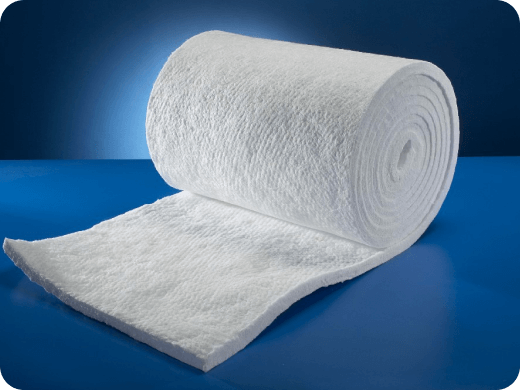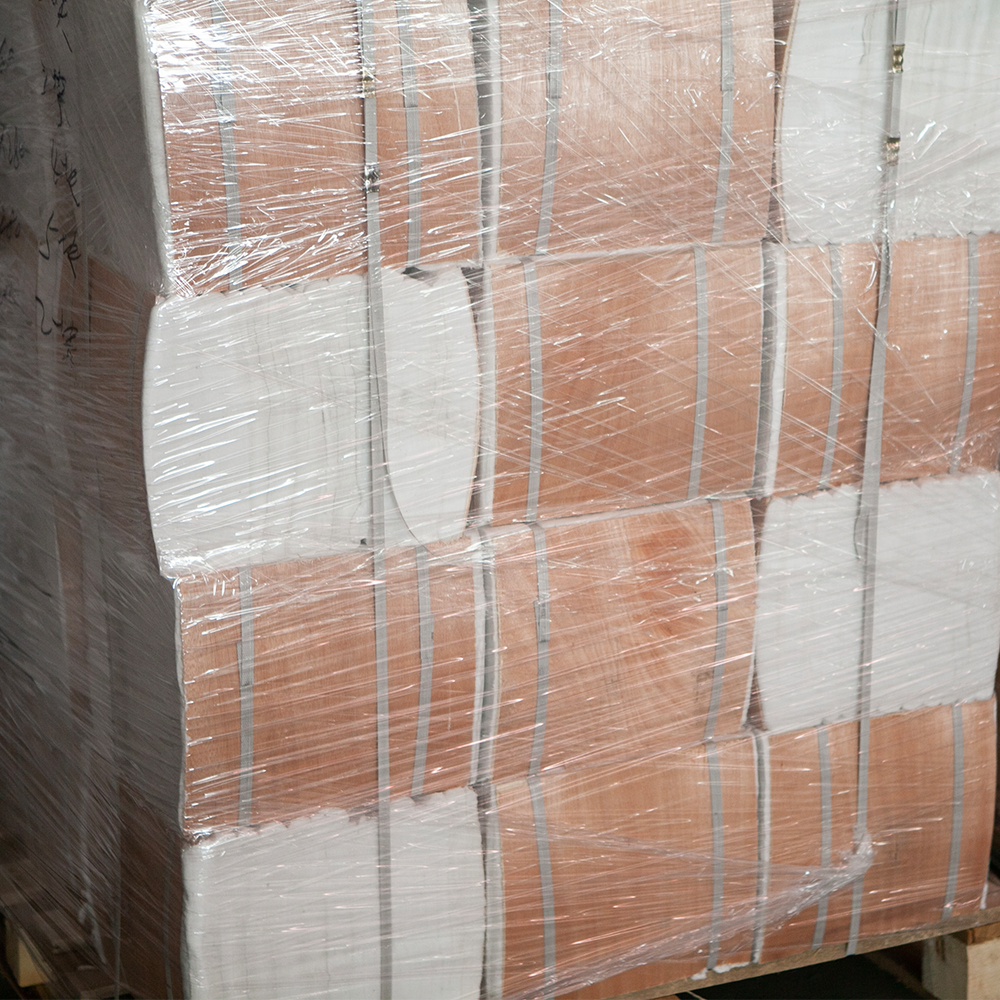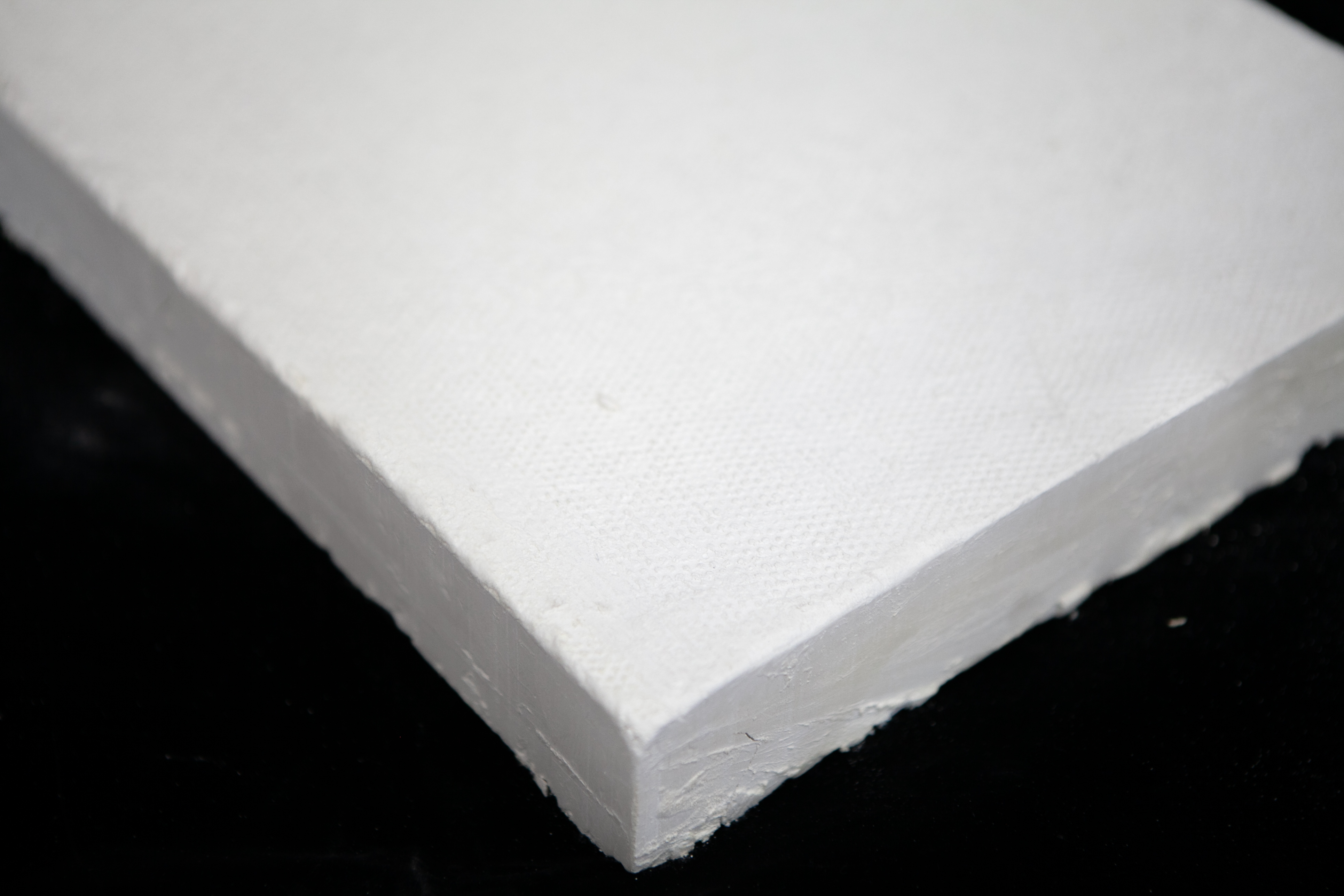In the realm of high - temperature insulation materials, ceramic fiber blankets stand out as a versatile and essential solution for numerous industrial and commercial applications. Whether you're in the manufacturing sector, construction industry, or involved in any process that requires efficient heat management, understanding what ceramic fiber blankets are can significantly impact your operational efficiency and cost - effectiveness.
Definition and Basic Concept
A ceramic fiber blanket is a flexible, lightweight, and highly efficient insulation material primarily designed to withstand extreme temperatures. It is crafted from ceramic fibers, which are composed mainly of aluminum silicate. These fibers are processed and woven together to form a soft, textile - like material that resembles a traditional blanket, hence the name. The unique structure of ceramic fiber blankets enables them to provide excellent thermal insulation while also offering flexibility and ease of installation.
Composition and Materials
The core component of ceramic fiber blankets is aluminum silicate. This material is derived from natural minerals such as bauxite, kaolin, and silica sand, which are melted at extremely high temperatures, often exceeding 2000°F (1093°C). During the melting process, the raw materials are transformed into a molten state and then spun or blown into fine fibers. These fibers can vary in diameter, typically ranging from 2 to 7 micrometers, and are the building blocks of the ceramic fiber blanket.
In addition to aluminum silicate, some ceramic fiber blankets may contain additives to enhance specific properties. For example, zirconia or chrome oxide can be added to improve the high - temperature resistance and chemical stability of the blanket, making it suitable for more demanding applications.
Key Properties
- High - Temperature Resistance: One of the most remarkable properties of ceramic fiber blankets is their ability to withstand high temperatures. They can typically endure continuous operating temperatures ranging from 1200°F (649°C) to 2300°F (1260°C), depending on the specific grade and composition. This makes them ideal for use in environments where exposure to intense heat is common, such as industrial furnaces, kilns, and boilers.
- Exceptional Thermal Insulation: Ceramic fiber blankets have extremely low thermal conductivity, which means they are highly effective at preventing heat transfer. This property helps in maintaining desired temperature levels within insulated systems, reducing energy consumption, and improving overall efficiency. For instance, in a furnace, a ceramic fiber blanket lining can significantly reduce heat loss, allowing the furnace to operate more efficiently and saving on fuel costs.
- Lightweight and Flexible: Unlike traditional insulation materials like brick or concrete, ceramic fiber blankets are lightweight and flexible. Their lightweight nature reduces the structural load on the equipment or building being insulated, while their flexibility enables easy installation, even in complex or irregularly shaped areas. This flexibility also allows for better conformability to surfaces, ensuring a tight and effective insulation barrier.
- Good Chemical Stability: Ceramic fiber blankets exhibit excellent resistance to most chemicals, acids, and alkalis commonly found in industrial settings. This chemical stability protects the underlying structures from corrosion and degradation, extending the lifespan of the equipment and reducing maintenance costs. However, it's important to note that they may not be suitable for use in environments with high concentrations of hydrofluoric acid or phosphoric acid.
- Sound Absorption: In addition to their thermal properties, ceramic fiber blankets also offer good sound - absorbing capabilities. They can effectively reduce noise levels in industrial facilities, creating a more comfortable and safer working environment.
Manufacturing Process
The production of ceramic fiber blankets involves several key steps:
- Raw Material Preparation: As mentioned earlier, the raw materials, mainly aluminum silicate - based minerals, are carefully selected and prepared. They are crushed and ground into a fine powder to ensure uniform melting.
- Melting: The powdered raw materials are fed into a high - temperature furnace, where they are melted at extremely high temperatures. The molten mixture is then ready to be transformed into fibers.
- Fiber Formation: There are two common methods for forming ceramic fibers: spinning and blowing. In the spinning process, the molten material is extruded through small orifices and then spun at high speeds, causing the material to solidify into fine fibers. Blowing, on the other hand, involves forcing the molten material out of the furnace using high - pressure air or steam, which breaks it into fibers.
- Needle Punching and Bonding: The formed fibers are then laid down in layers to create a web - like structure. Needle punching is often employed to interlock the fibers, enhancing the strength and durability of the blanket. In some cases, a binder may be added to further improve the cohesion of the fibers.
- Drying and Curing: The blanket is then dried to remove any moisture and cured to set the binder (if used), resulting in a finished ceramic fiber blanket ready for use.
Applications
Ceramic fiber blankets find extensive use in a wide range of industries and applications:
- Industrial Furnaces and Kilns: They are commonly used as linings for industrial furnaces, kilns, and ovens. By providing effective thermal insulation, they help in maintaining the desired temperature inside the equipment, reducing heat loss, and improving the efficiency of the heating process. This is crucial for industries such as metalworking, ceramics, glass manufacturing, and heat treatment.
- Power Generation: In power plants, ceramic fiber blankets are used to insulate boilers, turbines, and other high - temperature components. They help in reducing energy losses, improving the overall efficiency of the power - generation process, and protecting the equipment from the harsh operating conditions.
- Building and Construction: For buildings, ceramic fiber blankets can be used in fireproofing applications, such as fire - rated walls, ceilings, and floors. Their high - temperature resistance and ability to prevent the spread of fire make them an important safety feature. They can also be used for thermal insulation in building envelopes, helping to reduce heating and cooling costs.
- Automotive and Aerospace: In the automotive and aerospace industries, ceramic fiber blankets are used to insulate engines, exhaust systems, and other high - temperature components. Their lightweight nature is particularly beneficial in these applications, as it helps in reducing the overall weight of the vehicle or aircraft, improving fuel efficiency.
- Petrochemical Industry: In petrochemical plants, ceramic fiber blankets are used to insulate reactors, pipelines, and storage tanks. They protect the equipment from the high - temperature and corrosive environments typical of the petrochemical industry, ensuring the safe and efficient operation of the plant.
Maintenance and Care
To ensure the optimal performance and longevity of ceramic fiber blankets, proper maintenance is essential:
- Regular Inspection: Periodically inspect the ceramic fiber blankets for signs of wear, damage, or degradation. Look for any tears, holes, or areas where the fibers may have become compressed or flattened.
- Cleaning: Keep the blankets clean by removing any dust, debris, or contaminants that may accumulate on the surface. Use a soft brush or vacuum cleaner to gently clean the blankets, being careful not to damage the fibers.
- Avoid Moisture: Ceramic fiber blankets are not designed to withstand prolonged exposure to moisture. If the blankets become wet, dry them thoroughly as soon as possible to prevent damage to the fibers and a reduction in their thermal insulation properties.
- Replacement: If any significant damage or degradation is detected, replace the affected section of the ceramic fiber blanket promptly. This will ensure that the insulation performance of the system is maintained and that there are no potential safety hazards.
In conclusion,
ceramic fiber blankets are a highly versatile and valuable insulation material with a wide range of applications. Their unique combination of high - temperature resistance, excellent thermal insulation, lightweight, and flexibility makes them an ideal choice for industries and applications where efficient heat management is crucial. By understanding their properties, manufacturing process, applications, and maintenance requirements, you can make the most of these remarkable materials and enhance the performance and efficiency of your operations.


